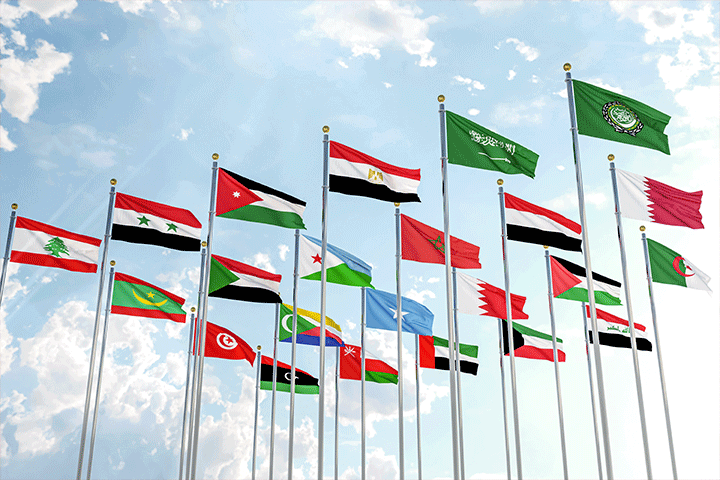Welcome to the vibrant and diverse Arab world! If you’re learning Arabic or simply curious about the rich tapestry of cultures that make up this fascinating region, you’ve come to the right place. We often get asked, “How many Arab countries are there?” and “What are all the Arabic country names?” That’s why we’ve put together this definitive list of Arab countries – your one-stop resource for understanding the geography and scope of the Arab world.
Prepare to explore a region stretching from the Atlantic Ocean to the Arabian Sea, united by language, history, and a shared cultural heritage.
How Many Arab Countries Are There? The Official Count
So, just how many Arab countries are there? The Arab League, a regional organization of Arab states, currently recognizes 22 Arab countries. These nations span two continents, Africa and Asia, each offering a unique blend of history, tradition, and modern life.
This comprehensive Arab country list is designed to make it easy for you to navigate and remember each one.
Your Complete List of Arab Countries: Arabic Country Names and More!
Here’s your ultimate Arab countries list, organized for clarity and ease of learning. We’ve included the Arabic country names to help you familiarize yourself with their pronunciation and script.
Arab Countries in Africa:
Africa is home to a significant portion of the Arab world, boasting diverse landscapes from the Sahara Desert to fertile Nile valleys.
- Algeria (الجزائر – Al-Jazā’ir)
- Comoros (جزر القمر – Juzur al-Qamar)
- Djibouti (جيبوتي – Jībūtī)
- Egypt (مصر – Miṣr)
- Libya (ليبيا – Lībiyā)
- Mauritania (موريتانيا – Mūrītānyā)
- Morocco (المغرب – Al-Maghrib)
- Somalia (الصومال – Aṣ-Ṣūmāl)
- Sudan (السودان – As-Sūdān)
- Tunisia (تونس – Tūnis)
Arab Countries in Asia:
The Asian part of the Arab world countries is often referred to as the Middle East, a region pivotal in world history and culture.
- Bahrain (البحرين – Al-Baḥrayn)
- Iraq (العراق – Al-ʿIrāq)
- Jordan (الأردن – Al-ʾUrdunn)
- Kuwait (الكويت – Al-Kuwayt)
- Lebanon (لبنان – Lubnān)
- Oman (عمان – ʿUmān)
- Palestine (فلسطين – Filasṭīn)
- Qatar (قطر – Qaṭar)
- Saudi Arabia (المملكة العربية السعودية – Al-Mamlakah Al-ʿArabīyah As-Saʿūdīyah)
- Syria (سوريا – Sūriyā)
- United Arab Emirates (الإمارات العربية المتحدة – Al-ʾImārāt Al-ʿArabīyah Al-Muttaḥidah)
- Yemen (اليمن – Al-Yaman)
What Defines an Arabic Country? Understanding the Arab World
When we talk about “Arabic countries” or the “Arab world countries,” it’s important to understand that this classification goes beyond mere geography. While Arabic is the official language in all these nations, the term “Arab” primarily refers to a cultural and linguistic identity rather than a strict ethnic one.
Ready to master Arabic? With the Kaleela app, you can dive deep into the language, explore rich Arab culture, and grasp essential grammar. Download the app and learn Arabic the right way and unlock a world of understanding.



